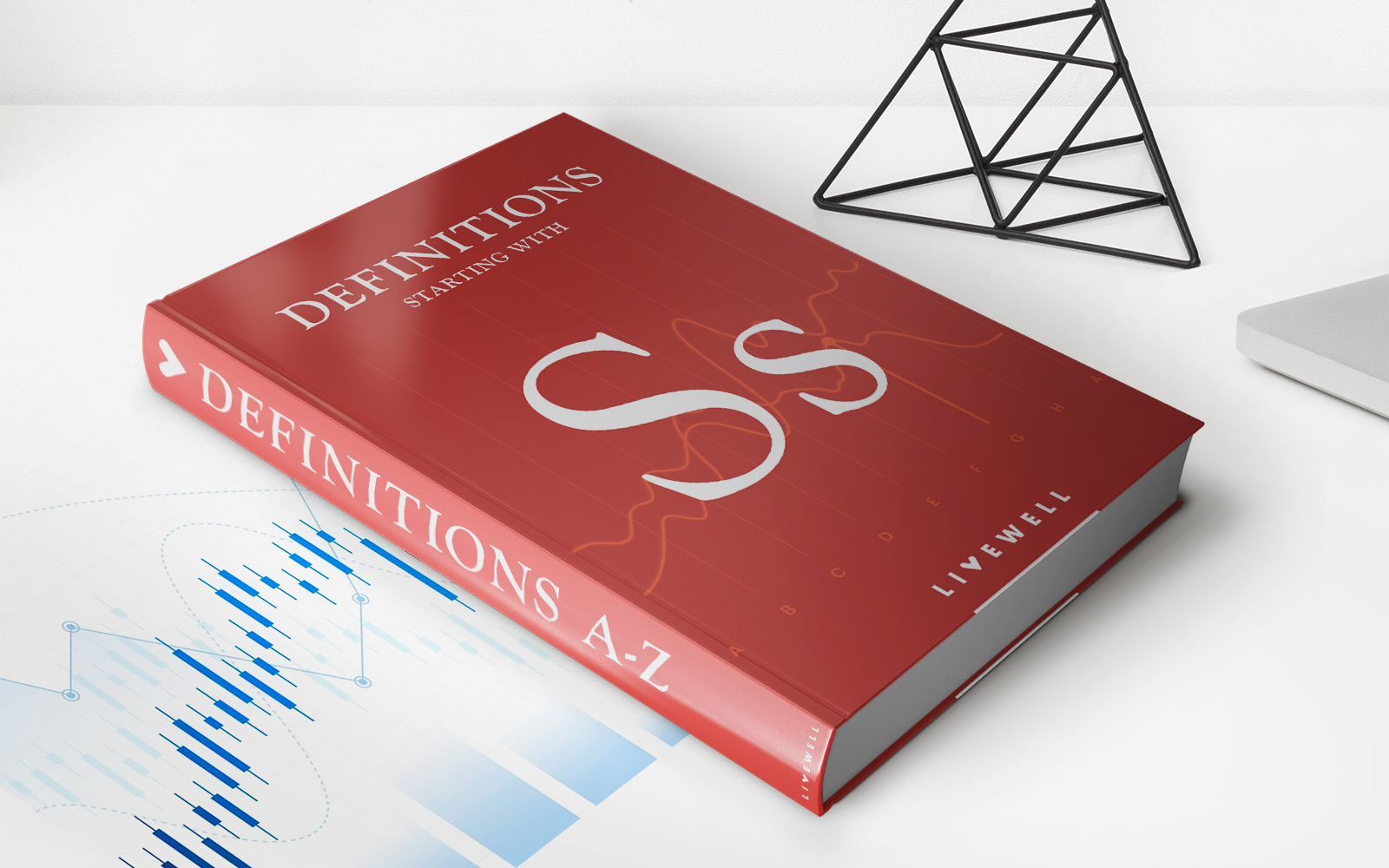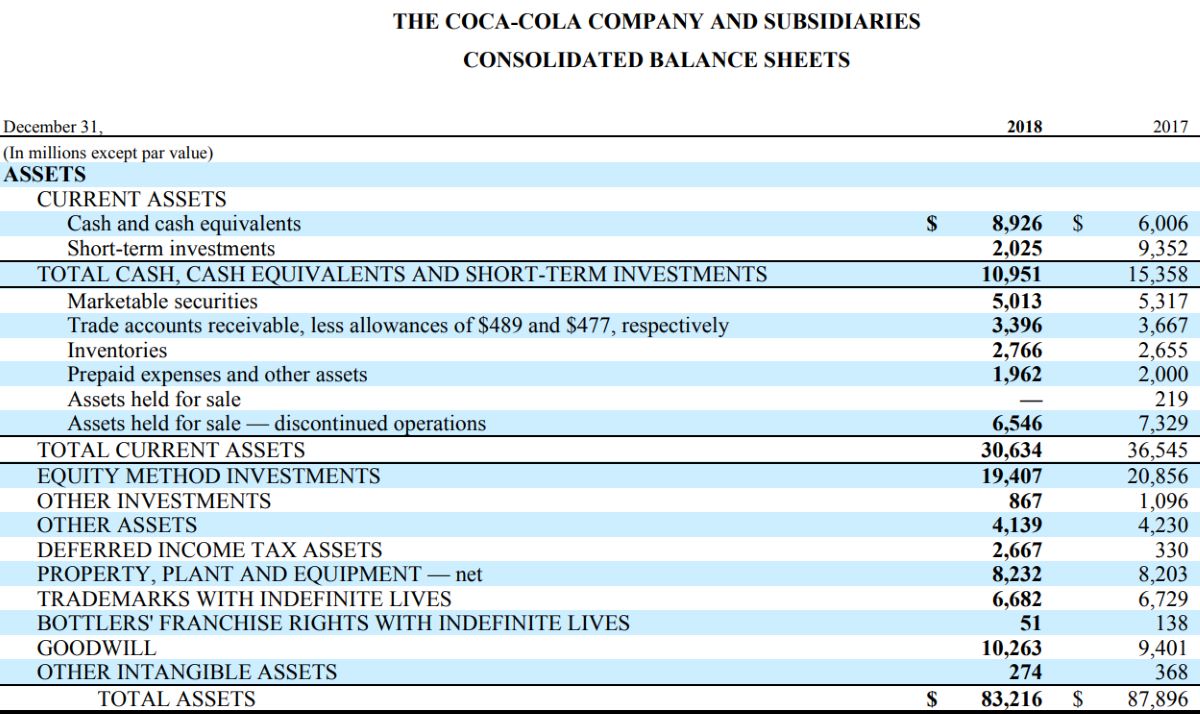

Finance
How Does Pension Affect Social Security
Published: November 27, 2023
Learn how pension affects your Social Security benefits and plan your finances accordingly. Understand the impact of pension on your retirement income and future financial stability.
(Many of the links in this article redirect to a specific reviewed product. Your purchase of these products through affiliate links helps to generate commission for LiveWell, at no extra cost. Learn more)
Table of Contents
Introduction
When it comes to financial planning for retirement, Social Security benefits and pensions play a significant role for many individuals. Understanding how these two components work together is crucial for maximizing your retirement income. In this article, we will explore how pensions can affect Social Security benefits and provide insights into the different provisions in place to ensure fairness in the system.
A pension is a retirement plan that is typically sponsored by an employer. It provides employees with a predetermined income during their retirement years. Pensions can vary in terms of eligibility, contribution requirements, and payout structures. Some pensions are funded solely by the employer, while others require employee contributions as well.
Social Security, on the other hand, is a federal program that provides retirement, disability, and survivor benefits. Eligibility for Social Security benefits is based on the number of credits an individual has earned throughout their working years. These credits are earned through paying Social Security taxes on income earned from employment or self-employment.
Now, let’s delve into how pensions can impact Social Security benefits. While pensions are an additional source of income in retirement, they can have implications on the amount of Social Security benefits you receive, particularly due to two key provisions – the Offset Provision and the Windfall Elimination Provision.
Understanding Pension
A pension is a retirement plan offered by employers to provide employees with a steady income during their retirement years. It is a form of deferred compensation, where a portion of an employee’s earnings are set aside to fund their retirement benefits.
There are different types of pensions, including defined benefit plans and defined contribution plans. In a defined benefit plan, the employer guarantees a specific amount of income to the retiree based on factors such as salary and years of service. The responsibility for funding this type of pension lies with the employer. On the other hand, defined contribution plans, such as 401(k) plans, allow employees to contribute a portion of their income and often include employer matching contributions. The amount of retirement income in a defined contribution plan depends on the contributions made and the performance of the investments chosen by the employee.
Pensions provide retirees with a steady stream of income, helping to cover living expenses after retirement. However, it’s important to note that pensions differ from Social Security benefits in several ways. Pensions are typically funded by the employer, while Social Security benefits are funded by Social Security taxes paid by both employees and employers. Additionally, pensions are often based on factors such as salary and years of service, while Social Security benefits are calculated based on an individual’s earnings history.
When planning for retirement, it’s essential to consider the terms and conditions of your pension plan. This includes understanding vesting periods, which determine when you become eligible to receive the pension benefits, as well as the payout structure. Some pension plans offer a monthly pension for life, while others provide a lump sum payout or a combination of both.
Overall, understanding the intricacies of your pension plan and how it works in conjunction with other retirement benefits, such as Social Security, is vital for making informed decisions and maximizing your retirement income.
Social Security Overview
Social Security is a government program established to provide a safety net for individuals and families in retirement, as well as those who are disabled or have lost a loved one. It is funded through payroll taxes paid by both employees and employers.
When it comes to retirement benefits, Social Security provides a monthly income to eligible individuals based on their average earnings during their working years. The amount of the benefit is determined by a formula that takes into account an individual’s highest 35 years of earnings, adjusted for inflation.
Full retirement age (FRA) is the age at which individuals are eligible to receive their full Social Security benefit. It is based on the year of birth and ranges from 66 to 67 years old. However, individuals have the option to start receiving reduced benefits as early as age 62, or they can delay benefits until as late as age 70 to receive increased monthly payments.
Social Security benefits can also be affected by your earnings while receiving benefits before reaching full retirement age. There is an earnings limit each year, and if you earn above that limit, a portion of your Social Security benefits may be withheld. Once you reach full retirement age, there is no earnings limit, and you can earn as much as you want without reducing your benefits.
In addition to retirement benefits, Social Security provides disability benefits to individuals who are unable to work due to a severe disability. Disabled individuals must meet specific criteria and have worked long enough and recently enough to qualify for these benefits.
Survivor benefits are another aspect of Social Security, providing income to the spouse, children, or dependent parents of a worker who has passed away. Eligibility for survivor benefits is based on various factors, including the age and relationship to the deceased worker.
Understanding the basics of Social Security is crucial for planning your retirement. It’s important to know your full retirement age, the amount of benefits you are eligible for, and any potential reductions or increases based on your circumstances. This knowledge will help you make informed decisions when coordinating your Social Security benefits with other retirement income sources, such as pensions.
Impact of Pension on Social Security Benefits
One important aspect to consider when it comes to pensions and Social Security benefits is how the presence of a pension can affect the amount of Social Security benefits you receive. The impact will largely depend on the type of pension you have and your employment history.
The Offset Provision is a provision that affects individuals who receive a government pension from a job not covered by Social Security. Under this provision, the Social Security benefits of these individuals may be reduced. The reduction is calculated based on a formula, taking into account the number of years a person worked in a job that does not pay Social Security taxes.
For individuals who worked in jobs that were covered by both pensions and Social Security, the Windfall Elimination Provision (WEP) comes into play. The WEP applies to individuals who have fewer than 30 years of substantial earnings under Social Security and are eligible for a pension from work not covered by Social Security. The provision adjusts the formula used to calculate Social Security benefits, resulting in a lower benefit amount.
Similarly, if you are receiving a government pension based on work that was not covered by Social Security, and you are also eligible for spousal or survivor benefits from Social Security, the Government Pension Offset (GPO) provision may apply. The GPO provision reduces the amount of your spousal or survivor benefits by two-thirds of the amount of your government pension.
It’s important to note that not all pensions will impact Social Security benefits. Pensions earned from a job that paid Social Security taxes will not be subject to these provisions, and your Social Security benefits will not be reduced as a result.
Understanding these provisions and their potential impact on your Social Security benefits is crucial for effective retirement planning. It’s essential to consider the income you will receive from your pension alongside your anticipated Social Security benefits to ensure you have a clear picture of your retirement income.
Moreover, consulting with a financial advisor or Social Security specialist can provide you with personalized guidance on how to navigate these provisions and maximize your retirement income by strategically coordinating your pensions and Social Security benefits.
Offset Provision for Government Pension
The Offset Provision is a provision that affects individuals who receive a government pension from a job not covered by Social Security. This provision is designed to ensure fairness by preventing individuals from receiving both full Social Security benefits and a government pension simultaneously.
Under the Offset Provision, the Social Security benefits of individuals who receive a government pension may be reduced. The reduction is based on a formula that takes into account the number of years a person worked in a job that does not pay Social Security taxes.
For individuals who worked in jobs where they did not contribute to Social Security but instead paid into a government pension, their Social Security benefits may be subject to a reduction. The reduction is commonly referred to as the Windfall Elimination Provision (WEP).
The formula used to calculate the reduction under the Offset Provision can be complex. It takes into consideration the number of years an individual worked in a job not covered by Social Security, as well as the average indexed monthly earnings (AIME). The AIME is the average of an individual’s highest 35 years of earnings, adjusted for inflation.
The reduced Social Security benefit amount is based on a percentage that decreases depending on the number of years an individual worked under Social Security. The reduction can vary, but it is limited to a certain percentage of the individual’s government pension amount.
It is important to note that the Offset Provision only applies to individuals who receive a government pension from a job not covered by Social Security. If an individual has worked in jobs where they paid into both a government pension and Social Security, they will not be subject to the Offset Provision for that particular pension.
Understanding the Offset Provision is crucial when planning for retirement. If you are eligible for a government pension and also anticipate receiving Social Security benefits, it is important to consider the potential reduction in your Social Security benefits. This reduction can impact your overall retirement income and should be factored into your financial planning.
If you have questions about how the Offset Provision may affect your specific situation, it is recommended to consult with a financial advisor or Social Security specialist who can provide personalized guidance and help you optimize your retirement income.
Windfall Elimination Provision
The Windfall Elimination Provision (WEP) is a provision that affects individuals who receive a pension from work not covered by Social Security and are also eligible for Social Security benefits based on other employment. The purpose of the WEP is to adjust the formula used to calculate Social Security benefits in order to prevent individuals from receiving disproportionately high benefits.
The WEP primarily impacts individuals who have worked in jobs where they did not pay Social Security taxes, such as certain government positions or jobs in foreign countries. It aims to ensure fairness by reducing the Social Security benefits of these individuals to account for the pension they receive from non-Social Security-covered employment.
Under the WEP, the formula used to calculate Social Security benefits is modified. Instead of using the standard formula, which provides higher replacement rates for lower-income workers, a different formula is applied to individuals subject to the WEP.
The WEP adjustment can significantly reduce an individual’s Social Security benefits. The exact reduction varies depending on the number of years an individual has worked in a non-Social Security-covered job and their average indexed monthly earnings (AIME), which is the average of their highest 35 years of earnings, adjusted for inflation.
The reduction in Social Security benefits is limited to a percentage of the individual’s average indexed monthly earnings, up to a certain maximum reduction. As of 2021, the maximum monthly reduction amount is set at $498, but it is indexed to inflation and can change annually.
It’s important to note that the WEP does not apply to everyone who receives a non-Social Security government pension. Certain groups of workers are exempt from the provision, such as those who have enough substantial earnings covered by Social Security to qualify for full benefits or individuals who reached 62 before 1986.
To determine the impact of the WEP on your Social Security benefits, it is essential to consult with the Social Security Administration or utilize online calculators specifically designed to account for the provision. These resources can provide you with a more accurate estimate of your expected benefits.
Understanding the Windfall Elimination Provision is crucial when planning for retirement. Being aware of its potential impact on your Social Security benefits can help you make informed decisions and ensure your retirement income is properly optimized.
Government Pension Offset Provision
The Government Pension Offset (GPO) provision is a rule that affects individuals who receive a government pension from work not covered by Social Security and are also eligible for spousal or survivor benefits through Social Security. The GPO provision aims to ensure fairness by reducing the amount of spousal or survivor benefits received by these individuals.
Under the GPO provision, the amount of spousal or survivor benefits that an individual can receive from Social Security is reduced by two-thirds of the amount of their government pension. This reduction can have a significant impact on the total amount of benefits you receive.
The GPO provision primarily affects individuals who have worked in federal, state, or local government positions where they did not pay Social Security taxes. It is important to note that the GPO provision does not apply to the individual’s own Social Security retirement benefits; it only affects spousal or survivor benefits that are based on the earnings of their spouse.
The reduction in spousal or survivor benefits is designed to offset the income received from the government pension. The reasoning behind this provision is that individuals with government pensions have already received a significant retirement benefit, so their eligibility for additional benefits through spousal or survivor benefits is reduced.
The reduction under the GPO provision is typically equal to two-thirds of the monthly amount of the government pension. For example, if an individual receives a government pension of $1,000 per month, their spousal or survivor benefits from Social Security would be reduced by $667 per month.
It is important to consider the impact of the GPO provision when planning for retirement. If you are eligible for a government pension and also anticipate receiving spousal or survivor benefits from Social Security, it is essential to take into account the potential reduction in your benefits. This reduction can impact your overall retirement income and should be factored into your financial planning.
If you have questions about how the Government Pension Offset provision may affect your specific situation, it is recommended to consult with a financial advisor or Social Security specialist who can provide personalized guidance and help you optimize your retirement income.
Strategies to Maximize Social Security Benefits with Pension
Coordinating your Social Security benefits with your pension is crucial for maximizing your retirement income. By employing effective strategies, you can optimize the benefits you receive from both sources. Here are a few strategies to consider:
1. Delay Social Security Benefits: Delaying your Social Security benefits beyond your full retirement age can result in higher monthly benefit amounts. This can be advantageous if you have a pension to rely on in the meantime. By waiting to claim Social Security, you can potentially increase your benefit amount by up to 8% per year until you reach the maximum at age 70.
2. Consider Spousal or Survivor Benefits: If you are eligible for both a pension and Social Security benefits, it’s important to explore your options with regards to spousal or survivor benefits. In some cases, it may be beneficial for the lower-earning spouse to claim their own Social Security benefits and then switch to a spousal benefit to maximize the combined benefits for the couple.
3. Coordinate Pension Start Date: Consider the start date of your pension payments in relation to your Social Security benefits. Timing the start of your pension payments strategically can help maximize your overall retirement income. Coordinate with a financial advisor to determine the most advantageous timing for your specific circumstances.
4. Take Advantage of Work Incentives: If you are still working and have a pension, it’s worth exploring Social Security’s work incentives. These incentives allow you to continue working without a reduction in your benefits beyond your full retirement age. By taking advantage of these programs, you can continue to accrue credits that can increase your Social Security benefits.
5. Optimize Tax Planning: Be mindful of how your pension and Social Security benefits are taxed. Understanding the tax implications can help you strategize withdrawal plans and minimize the impact of taxes on your retirement income. Consult with a tax professional or financial advisor to develop a tax-efficient withdrawal strategy.
6. Explore Other Retirement Income Sources: While pensions and Social Security benefits are crucial components of retirement income, consider diversifying your income sources. Explore other investment vehicles, such as individual retirement accounts (IRAs) or annuities, to supplement your pension and Social Security benefits.
Remember, every individual’s financial situation is unique, and what works for one person may not work for another. It is important to consult with a financial advisor or retirement specialist who can assess your specific circumstances and help tailor a strategy that maximizes your Social Security benefits while optimizing your pension and other retirement income sources.
Conclusion
Navigating the complexities of pensions and Social Security benefits is crucial for optimizing your retirement income. Understanding how these two components interact is essential in ensuring you make informed decisions that maximize your financial well-being during your golden years.
Throughout this article, we have explored various aspects related to pensions and Social Security benefits, including the impact of pensions on Social Security, provisions such as the Offset, Windfall Elimination, and Government Pension Offset provisions, as well as strategies to maximize your benefits.
When it comes to pensions, it is important to have a clear understanding of the terms and conditions of your specific plan. Consider factors like vesting periods, payout structures, and the coordination of your pension start date with Social Security benefits to optimize your retirement income.
Additionally, familiarize yourself with the provisions that may affect your Social Security benefits, such as the Offset Provision, Windfall Elimination Provision, and Government Pension Offset Provision. These provisions work to ensure fairness in the system but can impact the amount of benefits you receive. Understanding their implications will help you plan accordingly and avoid potential surprises in your retirement income.
By implementing effective strategies, such as delaying Social Security benefits, exploring spousal or survivor benefits, coordinating pension start dates, taking advantage of work incentives, optimizing tax planning, and diversifying your retirement income sources, you can maximize your benefits and create a more secure financial future.
Remember, each individual’s financial situation is unique, and it is crucial to seek personalized guidance from financial advisors or retirement specialists who can provide tailored advice based on your specific circumstances.
In conclusion, by understanding the interplay between pensions and Social Security, familiarizing yourself with the provisions that may affect your benefits, and implementing strategic planning, you can navigate the complexities of retirement income and maximize your financial stability during your golden years.














